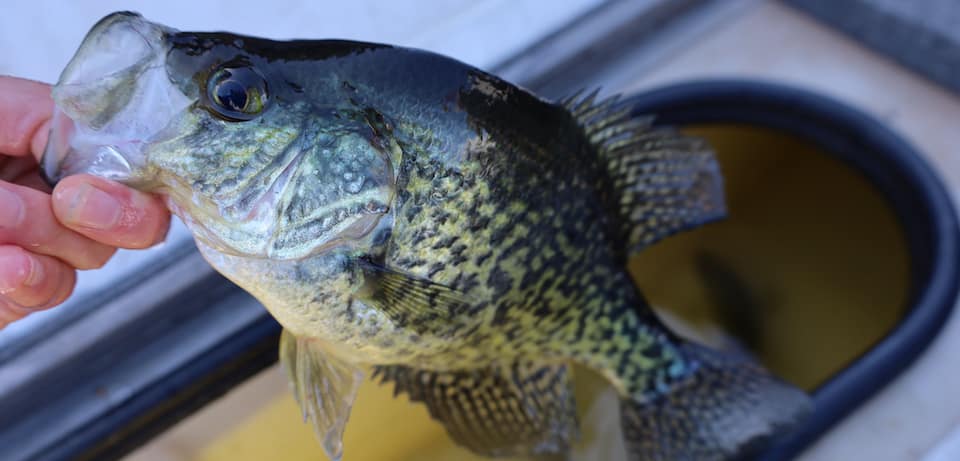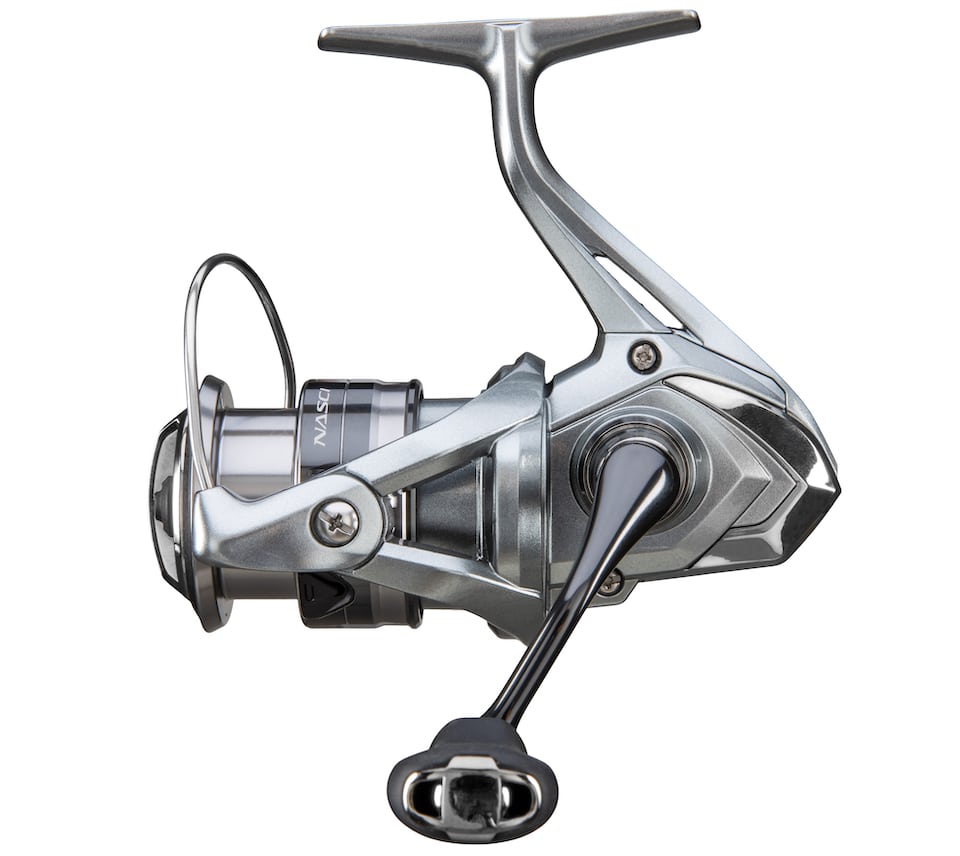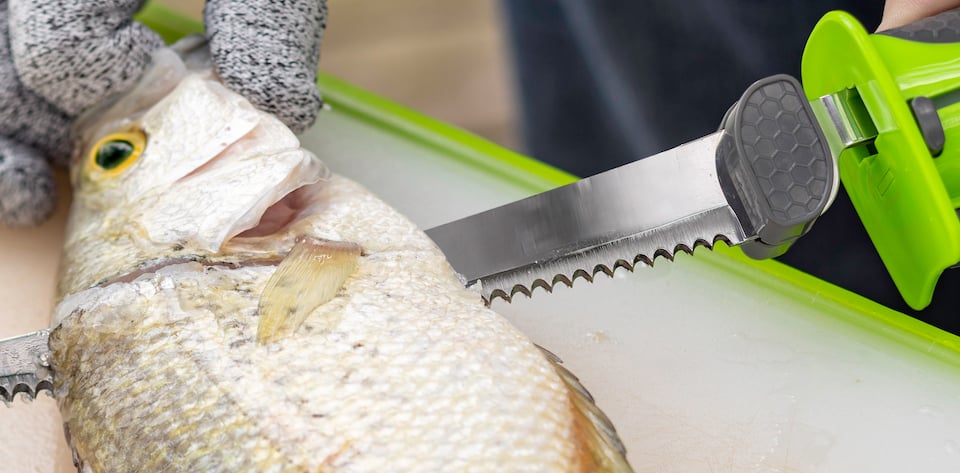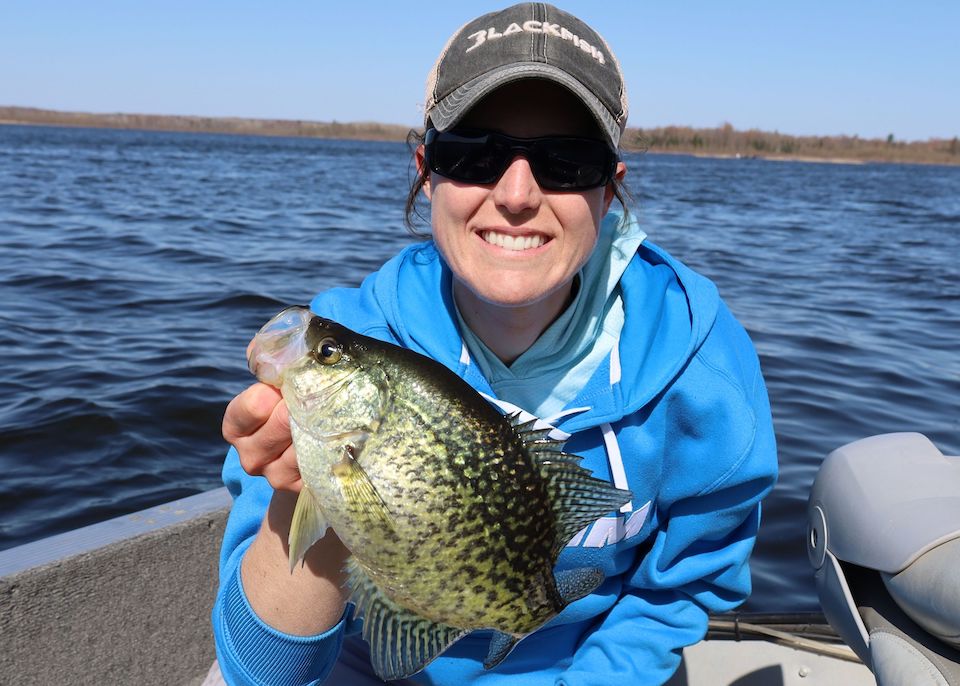Crappies are America’s favorite panfish. Anglers from North to South often spend the early part of their seasons pursuing these bountiful and tasty targets as they make their annual movements into the shallows to feed and then spawn. Here are some tips that will help you enjoy Nature’s most perfect panfish, both on the line and as guests of honor at the dinner table.

The Catch
You’ll probably wonder where to even begin to look for crappies as you hit the lake early in the season. Water temperatures, food sources, and available cover are the key factors to consider. In early Spring, crappies move from their winter spots and slowly transition into shallow water, beginning this transition once the water warms to 55 to 60 degrees. Flats adjacent to wintering holes or along weed edges 10 to 12 feet deep are great places to look. As the water continues to warm, you’ll find crappies moving into muddy weedy bays as they are there to feed. The mud provides bugs and attracts small baitfish, while the dark bottom keeps the water warmer. You should also consider trying the areas near the mouths of small rivers and creeks that feed into the lake. As spring progresses, crappies will start moving into their spawning areas. They need a firm bottom for nest building, generally with cover such as brush, timber, or weeds and frequently near deeper water. In muddy or stained water, crappies may spawn in the extreme shallows, while they may spawn slightly deeper in clear water. Typically crappies will spawn when water temperatures reach 65 to 70 degrees.
Be mobile when searching for early-season crappies. Use search baits like spinners and road runners with small plastic swimbaits or grubs, or even small panfish-sized crankbaits. Trolling can also be very effective in locating spring crappies. Once you find fish, you can spend more time in that area and use a bobber with a jig tipped with a minnow or small plastic. A 7-foot, Light power, Extra Fast action Shimano Sensilite spinning rod paired with a 1000-series Shimano Nasci FC reel is a terrific combo for crappie fishing, whether you’re covering water in search mode or setting up in one spot with bobbers and bait.

The Clean
Nothing beats bringing home a meal of fish after a long day of fishing. Plan ahead if you’re going to invite crappies over for dinner by bringing a cooler full of ice in the boat, especially as temperatures warm through the spring. Crappies can “go soft” relatively quickly in warm water, so putting fish you intend to eat right on ice will help keep them firm and delicious.
There are many different ways to clean fish, but skin-off boneless fillets are perfect for most recipes. Smiths Consumer Products makes a wide range of fillet knives that quickly convert a limit of crappies into a stack of thick, firm fillets. If you have a lot of fish to go through, consider the Mr. Crappie Slab-O-Matic Electric Fillet Knife from Smith’s. This knife comes with a pair of stainless steel blades: an 8″ blade to remove the fillets and skin, and a 4-1/2″ ribcage blade for detailed work. The Mr. Crappie Slab-O-Matic is the only electric knife on the market with this dedicated panfish-sized blade, making it the best choice for processing a pile of crappies. You’ll also appreciate the included fillet glove to protect your hand while you work and the marine-grade mesh storage bag.
Even the most conscientious fish cleaner will occasionally have stowaway skin or bones in their finished fillets. The Mr. Crappie 6 Inch Curved Slab Stacker Fillet Knife from Smith’s is perfect for those finishing touches that your fish fry guests will appreciate. Its 420-series stainless steel blade is razor-sharp and flexible, and its TPE textured non-slip handle provides a strong grip even when wet.

The Cook
A delicious meal of fresh crappies is one of the best things about spring. It’s hard to go wrong with pan-fried or deep-fried crappie, but in all honesty, Garlic Parmesan Crappie out of the oven is hard to beat – and it’s healthier too! Serve these with a crisp Caesar salad and some fresh bakery rolls to put smiles on the faces of young and old alike.
Ingredients:
2 pounds crappie fillets
2 teaspoons lemon pepper
2 tablespoons mayo
Butter or olive oil
Breading:
1 cup panko breadcrumbs
1 cup freshly grated parmesan cheese
3 minced garlic cloves
3 tablespoons finely chopped fresh parsley
3 tablespoons melted butter
2 tablespoons olive oil
½ teaspoon red pepper flakes
Directions:
Mix the breading ingredients in a bowl and set aside. Season both sides of the crappie with lemon pepper. Using a brush, apply a light layer of mayo on the top of each fillet. Arrange the fish on a parchment-lined cookie sheet sprayed with a thin layer of olive oil or butter. Spoon some of the breading mixture over each fillet, pressing it down with the back of the spoon so that it sticks; use about 1/4 inch of breading on each fillet. Spray the coated fish with a light layer of olive oil or spray butter.
Slide an oven rack about 6 inches below the broiler and set the oven to low broil. Once the oven is hot, place the pan of prepared fillets on the rack beneath the broiler. Cook for 10 to 12 minutes, or until the breading is crisp and golden and the fish is just cooked through. Try this recipe with your next batch of crappies, and I’m guessing it will become one of your favorites too!

Kristine Ostertag grew up in rural Wisconsin and was raised on the water and in the woods. She is passionate about the outdoors and spends each and every spare moment chasing something with fins, fur, or feathers. Follow along with Kristine’s outdoor adventures on Instagram @sportswomankristine.
The Women's Outdoor News, aka The WON, features news, reviews and stories about women who are shooting, hunting, fishing and actively engaging in outdoor adventure. This publication is for women, by women. View all posts by The WON